Control The Narrative



"Going up that river was like travelling back to the earliest beginnings of the world, when vegetation rioted on the earth and big trees were kings. An empty stream, a great silence, an impenetrable forest..." - Joseph Conrad, Heart of Darkness. McLeod Ganj. Photo by Sahil Pradhan.

Life isn't about resisting chaos. Life is about blossoming into a natural and elegant order on the edge of chaos.
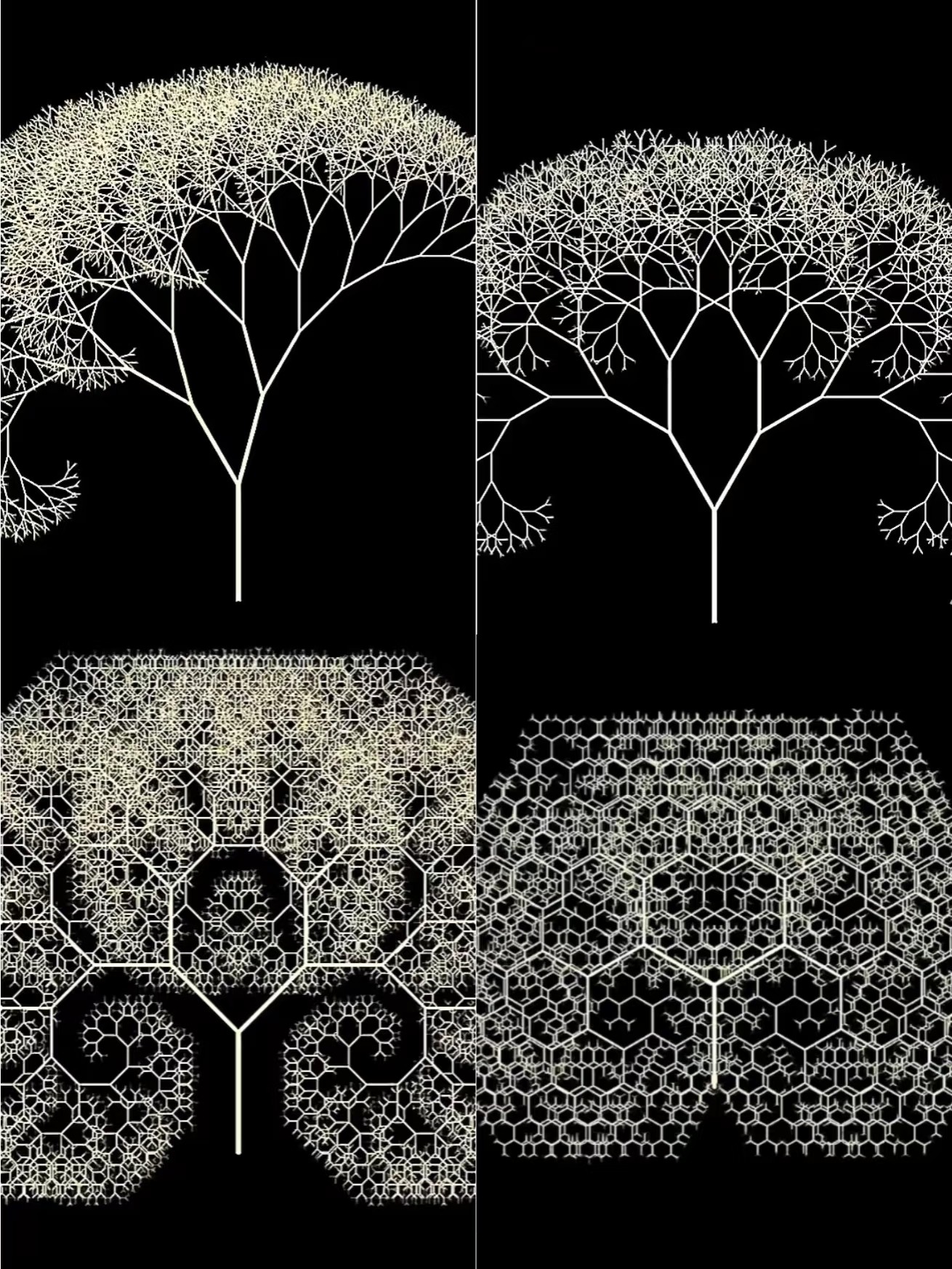
Exapt, Adapt, Disrupt: A Conceptual Framework for Systemic Innovation - by Jacqueline Fendt
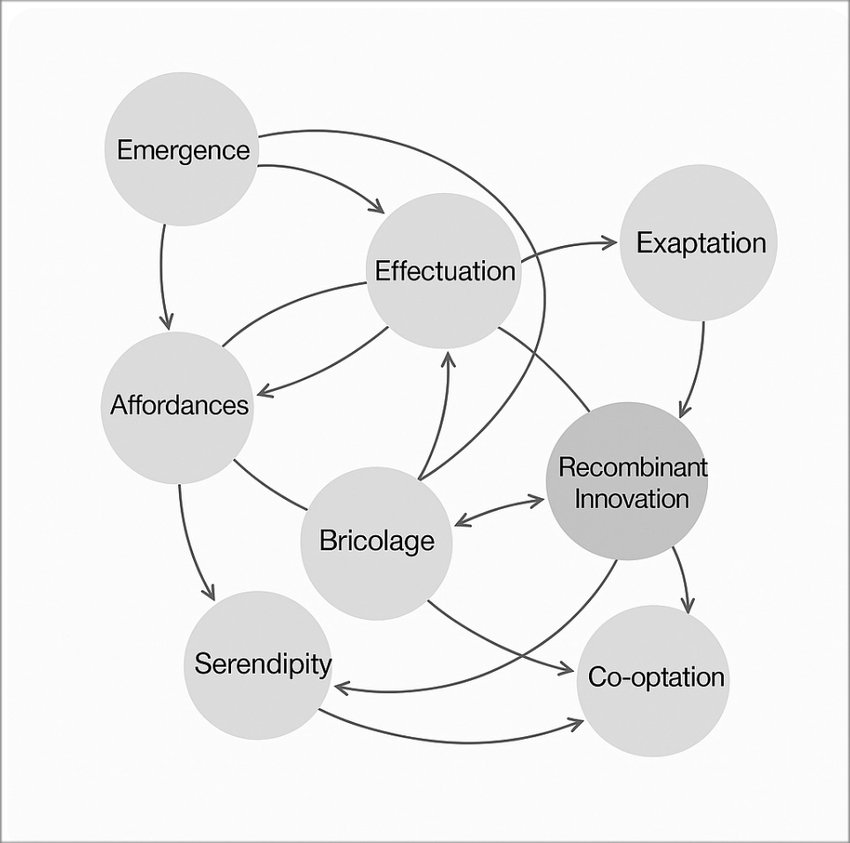
Abstract: How do breakthroughs emerge in unpredictable environments? This paper develops a unified framework for systemic innovation by integrating eight key concepts: exaptation, serendipity, emergence, co-optation, bricolage, affordances, recombinant innovation, and effectuation. By synthesizing insights from complexity science, sociology, and entrepreneurship, we reveal how creativity flourishes when innovators repurpose existing elements, harness uncertainty, and leverage unexpected affordances. Unlike conventional models that emphasize structured problem-solving, this framework captures the nonlinear, adaptive, and systemic nature of creativity in innovation ecosystems. We illustrate its applicability across diverse cases—from the exaptation of mRNA vaccines to the recombinant innovation of AI-driven drug discovery, the co-optation of gig work by tech giants, and the emergence of decentralized finance. Our findings suggest that transformative creativity is not a solitary act, but an emergent systems-level process shaped by adaptive recombination and strategic improvisation. By shifting the focus from predictive planning to creative adaptation, this study provides a novel roadmap for navigating uncertainty and fostering systemic change. It offers both scholars and practitioners an actionable lens to harness creativity, unlock latent affordances, and scale innovation in complex environments.
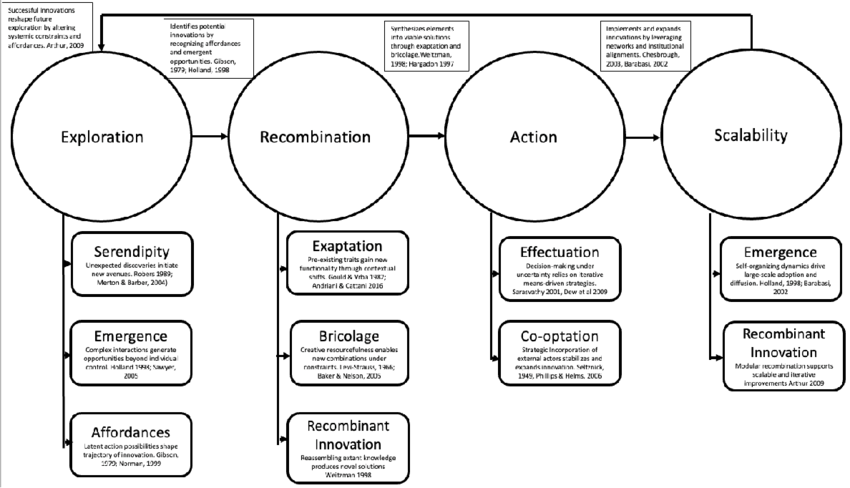
#Complexity #Science #ML #Creativity #Systems #KM #Generative #Augmentation
Towards a Theory of Serendipity: A Systematic Review and Conceptualization - by Christian Busch
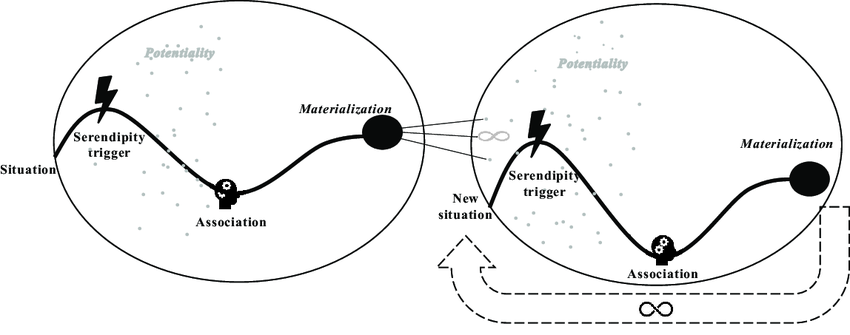
Serendipity is the discovery of valuable, unanticipated outcomes through exploration, often found while searching for something else. Serendipity is a catalyst for crossing emergence thresholds. Serendipity engineering tries to design systems that make serendipity more likely.
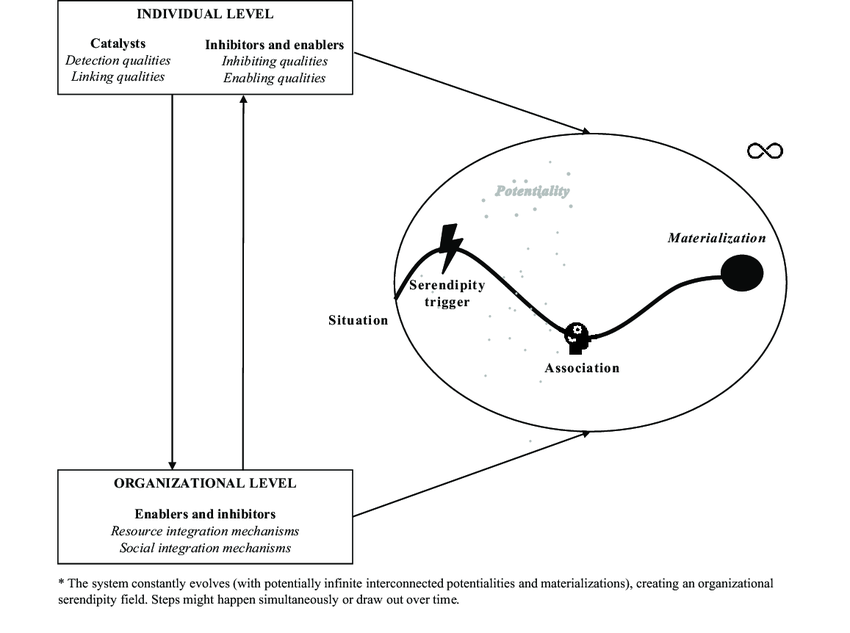
Persian architecture was literal art. Modern buildings look like they were designed by spreadsheets. We went from temples for the soul to glass prisons for productivity. If that’s progress, I want a refund.




Second-Order Thinking

1. Predicting the direct consequences of one's actions is first-order thinking; second-order thinking requires us to think more long-term and holistically, considering the consequences behind the consequences. Therefore, this concept is often referred to as the "Law of Unintended Consequences."
2. We need to be aware of second-order outcomes and use the predicted results to guide our decision-making.
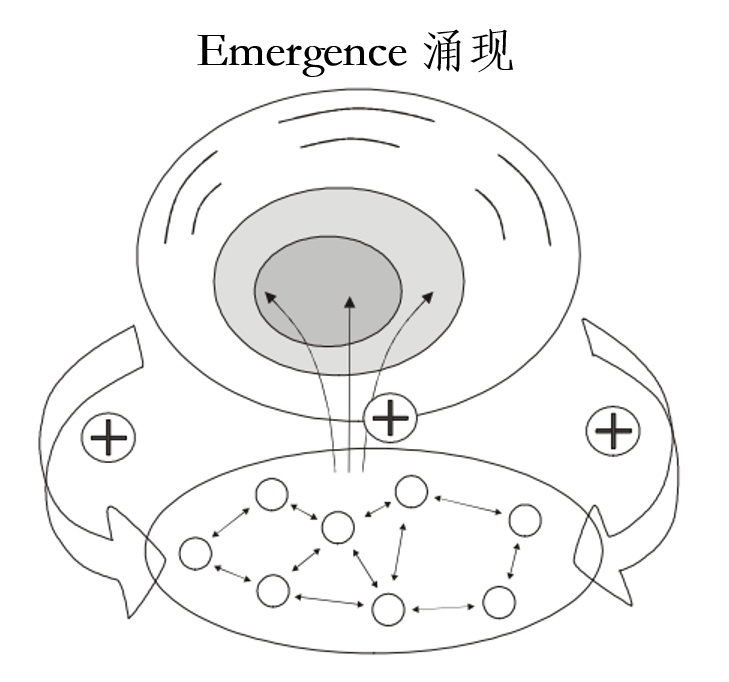
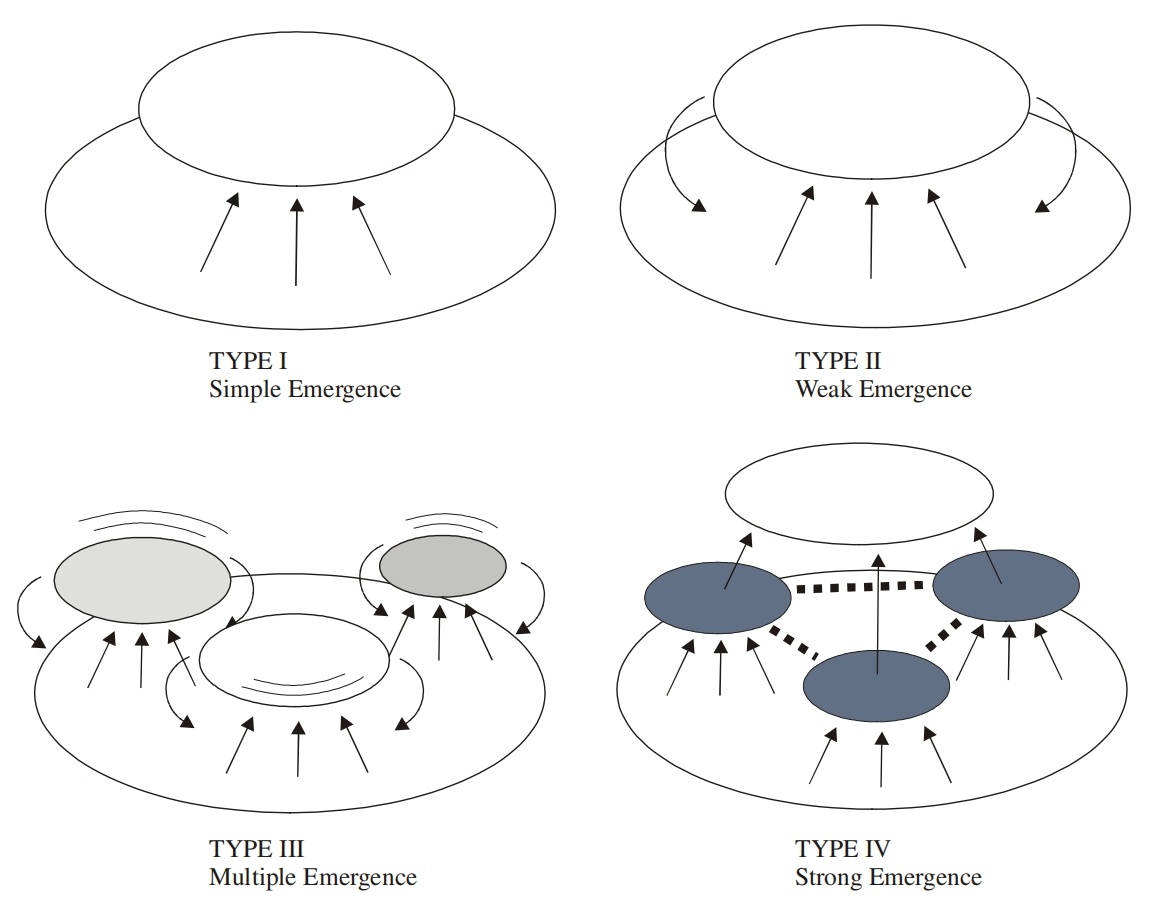
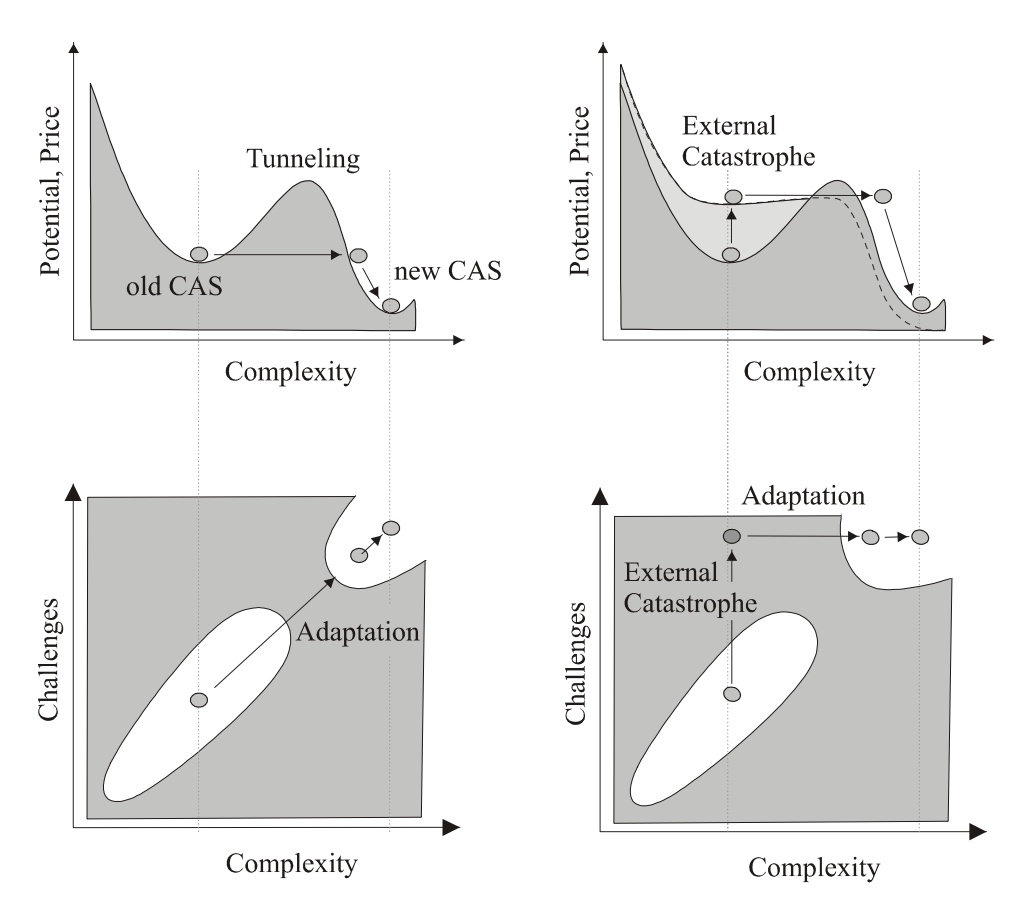
Definition: Emergence refers to properties that arise at a higher level of a system, which cannot be deduced or reduced from the individual characteristics of its basic elements. For example, life is an emergent property of gene interactions.
Paradox: Emergent properties possess both persistence and dynamism (e.g., the stable formation of a flock of birds despite individual changes), as well as dependence and independence (they depend on the system but are partially independent of microscopic elements).
Emergence is classified into four types based on feedback mechanisms and causal relationships, each containing subtypes:
I. Simple Emergence (No Top-Down Feedback)
Ia (Intentional Emergence): Human-designed systems (e.g., machines, software) with clear and predictable functions but lacking flexibility. Examples: clock functions, code semantics.
Ib (Unintentional Emergence): Emergence of statistical average properties (e.g., gas pressure, network characteristics), dependent on relationships between elements but without feedback.
II. Weak Emergence (With Simple Feedback)
IIa (Stable): Dominated by negative feedback, forming stable patterns. Examples: ant foraging, bird flock behavior, market economy supply-demand balance.
IIb (Unstable): Positive feedback leads to short-term explosive phenomena. Examples: stock market bubbles, fashion trends, social media hotspots.
III. Multiple Emergence (Complex Feedback and Adaptability)
IIIa (Pattern Formation): Combination of positive and negative feedback, generating complex patterns. Examples: animal fur patterns, reaction-diffusion systems, cellular automata (e.g., "Conway's Game of Life").
IIIb (Adaptive Emergence): Systemic breakthroughs overcoming barriers, such as significant transitions in evolution. Examples: ecosystem evolution, scientific paradigm shifts.
IV. Strong Emergence (Irreducible New Systems)
New hierarchical systems completely independent of underlying rules, such as life based on genes, culture based on language. This type of emergence crosses the "correlation barrier," where microscopic details do not affect macroscopic behavior. Examples: the origin of life, the evolution of language.
Feedback Mechanism: From no feedback (Type I) to multiple feedbacks (Type III), ultimately to transcendent systems (Type IV).
Predictability: Type I is fully predictable, Type II is predictable in principle, Type III is chaotic and unpredictable, Type IV is unpredictable due to new laws.
Philosophical Relevance: Strong emergence is related to "supervenience," where higher-level properties depend on but are independent of the lower level.
Engineering and Science: Understanding emergence helps design robust systems (e.g., coping with unpredictable failures), and optimize collective intelligence (e.g., distributed algorithms).
Evolution and Innovation: Emergence explains breakthrough evolution in complex systems like life and culture, emphasizing the catalytic role of environmental mutations (e.g., disasters) in innovation.
Nyujo入定 typically means a state of intense meditation however in Shingon Mikkyo Buddhism this describes doing intense fasting & training in order to enter a permanent state of meditation that will last past death.Mummies of people who achieve this state are called Sokushinbutsu.

“Carpe diem, quam minimum credula postero.” (“Seize the day, put very little trust in tomorrow.”) — Horace (Odes, I.11)
Note: This may be the last time you do this—or meet this person—so act as if it is.
